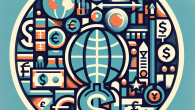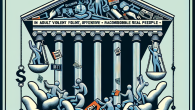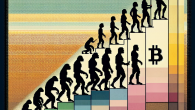
How the European Central Bank Balances Fiscal Discipline and Market Stability
The Silent Recession: Why Markets Boom While Households Bust
In the shimmering corridors of Wall Street, optimism flows like champagne. Indices climb, investor sentiment rebounds, and economic indicators flash green across trading terminals. Yet, take a stroll down any Main Street in America or Europe, and you’ll quickly sense a starkly contrasting reality: stagnating wages, rising debt, and job instability coupled with the ubiquitous dread of a rising cost of living.
Indeed, we appear to be living in a paradox. If you’re reading this and wondering how equities can post double-digit gains while your grocery bills have tripled, welcome to what some economists (yours truly included) have dubbed “The Silent Recession.”
What Is a Silent Recession?
The term isn’t official—don’t expect to find it in the IMF’s lexicon or your central banker’s latest report. However, a Silent Recession refers to a period in which macroeconomic data may signal growth, but a substantial portion of the population experiences stagnation or decline in real economic well-being. In other words, the economy, on paper, looks “healthy,” while the public quietly endures economic malaise.
It’s All About the Indicators
GDP growth? Positive. Stock market earnings? Beating estimates. Corporate profits? Record highs. But here’s what they don’t emphasize:
- Real wages adjusted for inflation have remained flat or declined.
- Consumer debt is reaching unprecedented heights.
- Credit delinquency rates are ticking upward, especially among younger demographics.
- Home affordability is at a 40-year low in many developed economies.
That disconnect is the hallmark of a Silent Recession. So, let us roll up our tweed sleeves and do what we economists do best—dissect the data behind the dichotomy.
The Disparity Between Financial Markets and the Real Economy
To the uninitiated, the performance of stock markets tends to be a proxy for the broader economy. And why not? When the S&P 500 breaks records, it’s tempting to infer prosperity. However, this is a dangerously misguided assumption.
The Top-Heavy Market Problem
Roughly 80% of the U.S. stock market’s gains in the past two years can be attributed to just a handful of large tech companies. These firms have robust international revenues, minimal domestic labor footprints, and benefit from lower interest rates more than your average storefront cafe or mid-sized logistics firm.
The financial gains therefore remain concentrated in the portfolios of large institutional investors and affluent individuals. For the average household, these market gains do little to offset stagnant wages and rising living costs.
The Role of Monetary Policy
Low interest rates and quantitative easing measures were meant to prop up lending and stimulate demand. And to some extent, they did. But they also contributed to:
- Asset price inflation: Homes, stocks, and even Bitcoin saw extraordinary valuation spikes.
- Wealth inequality: Those with assets saw ballooning net worth; those without found themselves increasingly priced out of the market.
- Corporate dependency: Business models shifted to exploit capital access rather than performance metrics.
The irony? The very mechanisms that were supposed to prevent a traditional recession may have ended up fostering a hidden, class-divided one—the Silent kind.
Labor Markets Tell a Different Story
The unemployment rate may be historically low, but underemployment and job insecurity are still rampant. Many are working multiple part-time jobs or trapped in the gig economy without benefits or long-term stability.
You may have noticed increasing strikes, unionization efforts, and labor unrest—the most visible symptoms of a longstanding economic malaise that government statistics tend to understate or ignore. Labor force participation among working-age men has been declining for decades, and during the past three years, early retirements and mental health-related work disruptions have only compounded the situation.
Consumer Sentiment: The Emotional Lagging Indicator
Markets tend to operate on forward-looking models; consumers, constrained by lived reality, do not.
Even if macro indicators signal a “technical recovery,” it means little when consumer sentiment surveys continue to show record-low confidence. According to recent University of Michigan data, consumer expectations about their financial future have dropped sharply in tandem with inflation spikes—regardless of employment status.
This emotional component is not trivial. It affects spending patterns, savings behavior, and ultimately, GDP growth itself. People who feel squeezed don’t buy TVs—or Teslas.
Global Perspectives
The Silent Recession is not uniquely American. In the UK, rising energy costs triggered by geopolitical tensions have created a cost-of-living crisis coupled with stagnant productivity. In Germany, slowed Chinese demand has led to manufacturing contractions, yet the DAX stays bullish.
Emerging markets are also caught in the squeeze. While some enjoy investment inflows and commodity windfalls, their domestic populations suffer from food inflation, currency volatility, and widening inequality.
How Long Can the Paradox Last?
Historically, such divergences have course-corrected—sometimes gently, sometimes catastrophically. This time, central banks walk a tightrope between curbing inflation and avoiding a market crash, all while fiscal authorities face budget constraints and rising political unrest.
It is not sustainable to have a split economy: one half dazzling investors with charts that climb, and another half quietly resigning itself to financial ruin. Either the data must reflect the pain on the ground, or the pain will inevitably manifest in the data.
Leading Indicators to Watch
- Rising consumer credit and auto loan defaults
- Increase in small business bankruptcies
- Expansion of public assistance enrollment
- Labor force polarization: high-end hiring alongside low-end layoffs
What Can Be Done?
I hesitate to dole out panaceas, but here are a few policy pivots that could turn the tide:
- Broad-based fiscal stimulus aimed at infrastructure and wage growth, not just capital markets.
- Reforming labor laws to better protect gig and part-time workers.
- Rethinking inflation targets to avoid overly aggressive interest rate hikes that disproportionately harm low-income households.
On the individual level, financial literacy and prudent fiscal behavior remain your best defense. Yes, even in a landscape more surreal than a Magritte painting.
Final Thoughts from Dr. Whitmore’s Desk
If we judge our economies solely by the stars of our stock indices, we risk missing the gravitational pull of discontent just below the surface. A Silent Recession, by definition, doesn’t scream. But ignore it, and eventually, it roars.
For those wishing to delve deeper into our economic ethos, visit our About Us page or connect directly via Contact Us. Economic literacy is not only a personal asset—it’s a public imperative.
It has been a pleasure, as always, to dissect the entrails of capitalism with you. Until next time, keep your minds sharp and your portfolios diversified.









Leave a Reply